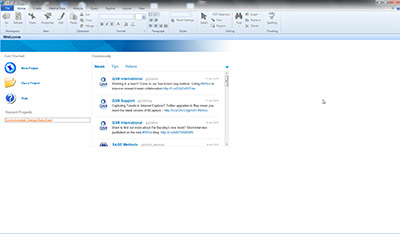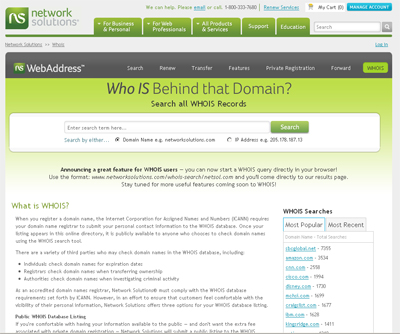Faculty, staff, and graduate students at K-State have a site license for NVivo, a data analysis tool used with qualitative and mixed methods research. This license gives them free access to this multi-modal data management and analysis tool. Four customized and interactive webinars have been scheduled for Fall Semester 2013.
Category: Research and reference
IT research tools and services at K-State
K-Staters who need to do some research will want to know about these services supported by either wholly or in part by Information Technology Services. Continue reading “IT research tools and services at K-State”
Project plan under way to sunset Axio Survey
By Rebecca Gould
Information technology services is in the process of developing a project plan to sunset Axio Survey, a survey tool developed by information technology services more than 10 years ago. Updates have been made to the tool since its release in 2001; however, few upgrades and investments have been made in this application over the last five years while information technology services’ programmers work on other enterprise projects. Also since its release, more comprehensive survey tools are available that allow for collaboration across the world and are available in the cloud. Continue reading “Project plan under way to sunset Axio Survey”
Q/A: Where to find K-State phone manuals?
Q. When I got my new desktop phone, I was told the user manual was available online. Where can I find K-State phone manuals?
K-State’s telephone user guides are all online in PDF format and cover 16+ models.
Easiest way to find the phone manuals? Go to the K-State homepage and search for “telephone”. The top search results link to various pages on the Voice website (by Information Technology Services) and they all have a User guides link in the right column.
Spotlight: Five-minute videos
 The “5min Life Videopedia” website (www.5min.com) has a plethora of five-minute instructional videos covering many different categories, such as home, food, music, travel, technology, and more.
The “5min Life Videopedia” website (www.5min.com) has a plethora of five-minute instructional videos covering many different categories, such as home, food, music, travel, technology, and more.
You can create your own videos and upload them to the site, or add existing videos to your own website with a few easy steps. You can either have a single video that’s related to your page or you can add a video thumbnail strip that displays multiple videos related to your page. In both cases, the VideoSeed tool analyzes the content of your pages and then displays relevant videos.
For starters, check out this video that gives a tour of Windows 7.
Largest academic research supercomputer in Kansas is Beocat at K-State
Did you know that K-State has the largest academic research supercomputer in Kansas? “Beocat” is a computer cluster supporting research projects across campus with some pretty serious computational horsepower — 1,000 cores in over 100 machines, which gang up to tackle big problems that on a single PC might take months or years to finish.
Typical uses include things like:
- Trying to figure out which genetic markers correlate to various traits such as drought resistance or disease susceptibility in plants
- Modeling water usage in the Ogallala Aquifer
- Simulating the ability of a drug to penetrate a cellular membrane
Continue reading “Largest academic research supercomputer in Kansas is Beocat at K-State”
Spotlight: Who’s behind that website? Use WHOIS tool
A tool that has been around for many years has been the query/response protocol querying databases to find out who the registrant for a particular domain name or IP address is. The registrant of a domain is the one who controls its administration. Network Solutions offers a simple WHOIS interface to help users discover a site’s registrant.
Continue reading “Spotlight: Who’s behind that website? Use WHOIS tool”
Why K-REx is better than a webpage for storing faculty publications
About 50 K-State faculty have deposited their published journal articles, book chapters, and conference papers in the K-State Research Exchange, but many more faculty have lists of their publications (and sometimes links to their articles) on a personal or departmental website. Isn’t that the same thing? Not even close!
K-REx is built on the Open Archives Initiative Protocol for Metadata Harvesting (OAI-PMH), a set of standards for facilitating sharing of information (metadata) about articles, book chapters, dissertations, and other publications. OAI-PMH makes metadata available to search engines such as Google in a very structured way, which helps to produce higher rankings in search results. Continue reading “Why K-REx is better than a webpage for storing faculty publications”
Social bookmarking with Diigo
 Social bookmarking is the process of users storing and organizing webpages and web content in an open and public fashion. The end result of this is something called a folksonomy. Where a taxonomy is a strict categorization of the formal structure of a given thing, a folksonomy is a categorization and organization of the structure of a given entity by the common people (“folks”) who choose to help organize the information.
Social bookmarking is the process of users storing and organizing webpages and web content in an open and public fashion. The end result of this is something called a folksonomy. Where a taxonomy is a strict categorization of the formal structure of a given thing, a folksonomy is a categorization and organization of the structure of a given entity by the common people (“folks”) who choose to help organize the information.
This organizational schema is created by individual users “tagging” bookmarks with keywords that the user think can be attributed to the content (and is usually expressed using a “tag cloud” — see image above). Different from the concepts of folders, tagging allows any individual piece of information to be attributed with a countless number of keywords or “tags”.
More than a subtle shift, the development of social bookmarking — which helped reconceptualize organizing information through the use of tags instead of folders and resulted in the creation of a human-powered folksonomy — is one of the foundational elements to the current dynamic and ultra-networked Web (2.0).

